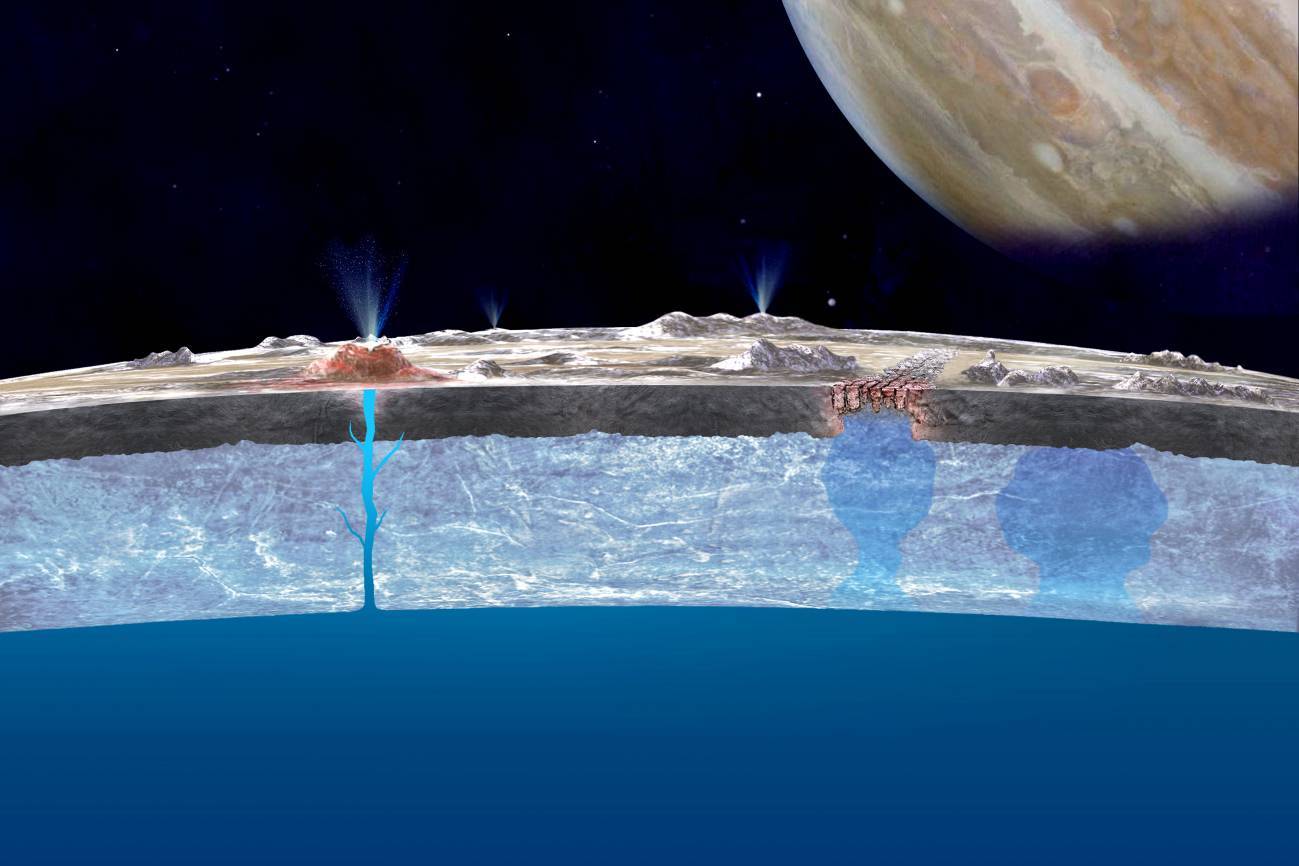Reactions to the proposal that features on the moon Europa may be due to the presence of liquid water
A study based on observations of the Greenland ice sheet, published in Nature Communications, suggests that there may be shallow liquid water on Jupiter's moon Europa. The finding could provide insights into the geophysical processes that formed the moon.

Illustration of the great ocean of Europe and its icy crust. / NASA/JPL-Caltech
Jesús Martínez Frías sobre posible agua líquida en luna Europa - EN
Jesús Martínez Frías
Planetary geologist and astrobiologist at the IGEO (CSIC-UCM). Academician of the Royal Academies of Sciences and Doctors of Spain. President of the Planetary Geology Commission of the Geological Society of Spain and of the Spanish Network of Planetology and Astrobiology.
It is a research of excellent quality from the point of view of comparative planetology (in this case comparing a planet, such as Earth, with an icy moon, such as Europa), which establishes a potential analogue in Greenland, both in terms of materials (ice) and geodynamic processes.
The conclusions are, in my opinion, more a discussion chapter than the typical and conventional conclusions of an experimental study with data. However, it is not without validity. The scientific analogies and hypotheses are very well established and the terrestrial analogs are proving very useful (as observed, for example, on Mars).
The proposed model is geologically very plausible and interesting, although the astrobiological allusions to habitability would require more data than those reflected in the article.
It is a work that follows the usual conceptual and methodological lines of the application of terrestrial analogues (in this case, ice and its dynamics) to other planets and moons, with the consequent limitation that this implies.
Knowledge of our planetary environment is fundamental to understand the context in which we find ourselves, especially if there are components of the study that could be related to the possible existence of life beyond what we know.
I believe that the authors have been rigorous in this case and have avoided unnecessary and, in many cases, counterproductive speculations in the article, which could lead to confusion.
Olga Prieto-Ballesteros sobre agua líquida en luna Europa -EN
Olga Prieto-Ballesteros
Research Scientist at the Department of Planetology and Habitability of CAB-INTA-CSIC
In the coming years, two space missions will be launched to the Jupiter system to characterize the habitability of its icy moons, especially Europa and Ganymede (JUICE/ESA and Europa Clipper/NASA). The information currently available indicates that liquid water is present in the interior of these satellites, mainly forming oceans. The authors of the paper suggest that geological structures called "double ridges," spread across Europa's ice crust, are evidence that shallow liquid levels are abundant and accessible on this moon for detection by future missions.
By observing by radar how double ridges, which are not common in Greenland ice, are created, the authors highlight the value of studying terrestrial analogues in planetary science. Bridging the gap between some physical conditions of planetary bodies, the geophysical study of large terrestrial ice masses allows modeling and understanding details of the dynamics of Europa and other moons. Instruments similar to those used in the campaigns described in the article will fly on the aforementioned space missions, so the prior analysis of terrestrial signals will greatly facilitate the interpretation of upcoming planetary data.
Terrestrial investigations not only help to locate habitable environments, but also contribute greatly to the development of an efficient strategy for the search for signs of life on icy moons, which is a priority objective of space agency programs in the coming decades and poses important scientific, technological, and philosophical challenges.
Riley Culberg, Dustin M. Schroeder, Gregor Steinbrügge
- Artículo de investigación
- Revisado por pares
- Estudio observacional
- Modelización
